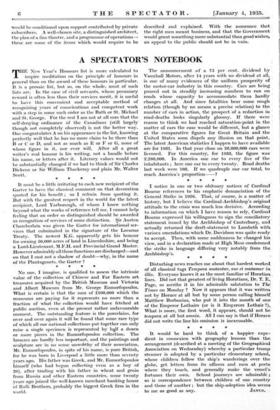No one, I imagine, is qualified to assess the intrinsic
value of the collection of Chinese and Far Eastern art. treasures acquired by the British Museum and Victoria' and Albert Museum from Mr. George Eumorfopoulos. What is certain is that the sum of £100,000 which the museums are paying for it represents no more than a fraction of what the collection would have fetched at public auction, even at the present rather unfavourable moment. The outstanding feature is the porcelains, for over and over again it will be found that some rare type of which all our national collections put together can only raise a single specimen is represented by hillf a dozen or more pieces in the Eumorfopoulos collection. The bronzes are hardly less important, and the paintings and sculpture are in no sense unwcfrthy of their association. Mr. Eumorfopoulos, in spite of his name, is pure British, for he was born in Liverpool a little more than seventy years ago. His father was Greek, and Mr. Eumorfopoulos himself (who had begun collecting even as a boy of 20), after trading with his father in wheat and grain from Russia and other Eastern countries, some twenty years ago joined the well-known merchant banking house of Ralli Brothers, probably the biggest Greek firm in the world.






































 Previous page
Previous page